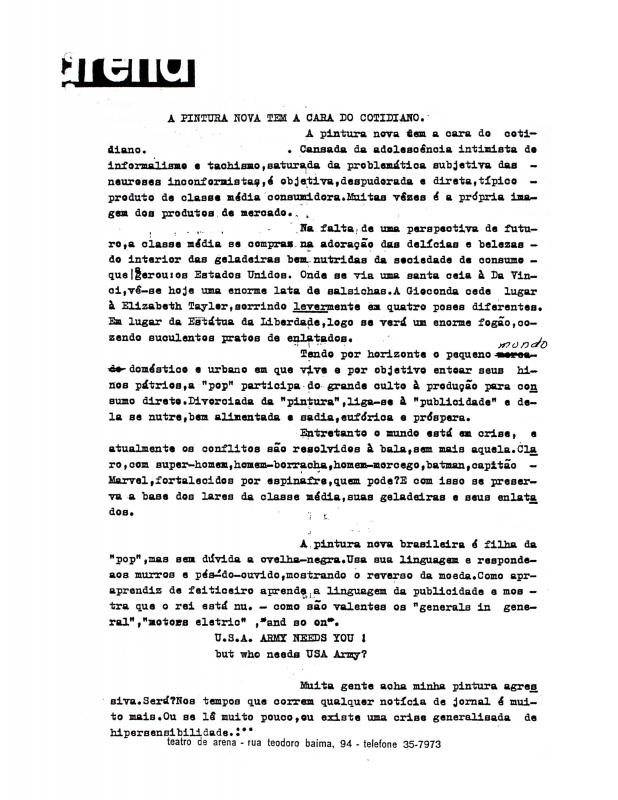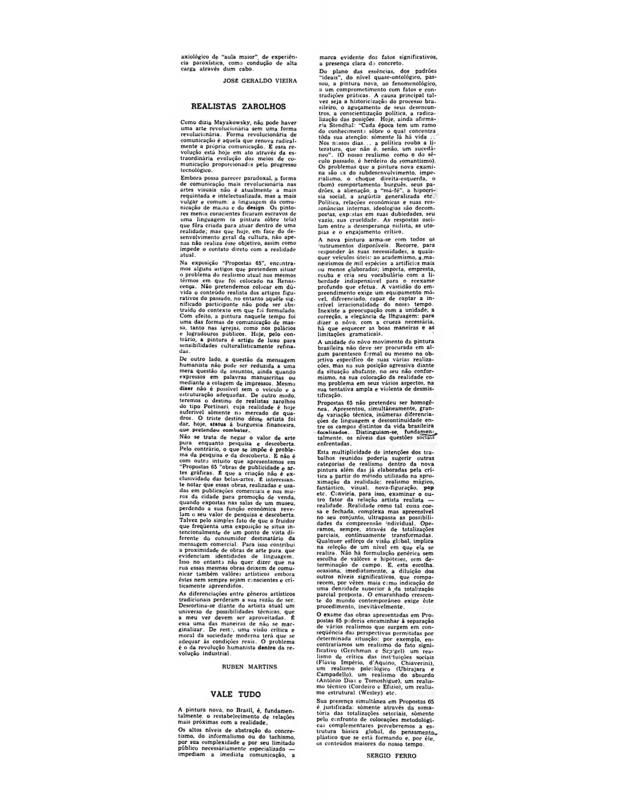Expressions designated as “informal art,” “tachisme,” and “lyrical abstraction” were circulating in 1950s Brazil, referring to painting characterized by blotches and dabs of paint, and graphic symbols, used by artists such as Antonio Bandeira, Manabu Mabe, Tomie Ohtake and Flávio Shiró, among others (with the exception of Bandeira, all the other artists listed were marked by a strong foundation in the use of ideograms.) This text captures Pedrosa’s views as he examined critic Jaime Maurício’s stance on the term informalism. [See in the ICAA digital archive “Do ‘informal’ e seus equívocos” (doc. no. 1085759)].
Mário Pedrosa (1900–81) was an intellectual and politician, and undoubtedly the key theoretician and critic on Brazilian art of the 20th century. He began as an international politics correspondent for the Diário da Noite, and beginning in the 1920s he was affiliated with the PCB (Communist Party of Brazil). He was imprisoned in 1932 because of his political militancy (Trotskyism). During the Estado Novo of Getúlio Vargas, he lived in exile in France and New York, and only returned to Brazil after the Second World War, when he worked for the Correio da Manhã. His stance against Stalinism led him to found the Vanguarda Socialista, a weekly publication. He presented a thesis on aesthetics called “Da natureza afetiva da forma na obra de arte” (1949) at the School of Architecture (Rio) that made use of his philosophical background, and his knowledge of Gestalt psychology; during that time he was also one of the founders of the AICA (1948) and also organized the International Conference of Art Critics (Brasilia, 1959). He wrote an arts column for the Tribuna da Imprensa (1950–54) and was an organizing member of the II and III São Paulo Biennials (1953 and 1955), later becoming director of the MAM-SP (1961–63). He served as secretary for the National Council of Culture during the brief government of Jânio Quadros. During the military dictatorship he took refuge in Chile, where he became director of the Museo de la Solidaridad in Santiago; after the Pinochet coup (1973), he left for Havana, where he served as secretary for the Museo de la Resistencia Salvador Allende. He only returned to Brazil in 1977 (at the beginning of the amnesty) and was the first to sign the manifesto creating the PT (Party of Workers, 1980). His vast library (which included eight thousand volumes) is partially available at the national library in Rio de Janeiro.
[See in the ICAA digital archive these other texts on tachisme in Brazil: by Flávio Império “A pintura nova tem a cara do cotidiano” (doc. no. 1110444); and by Sergio Ferro “Vale tudo” (doc. no. 1090648)].


